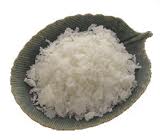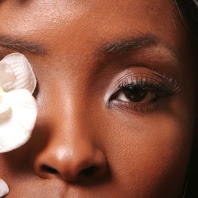When It Comes To Water There Are So Many Choices These Days Many of Us Just Don't Know What To Buy Or Where To Start. Ads By Big Companies Keep Us Wanting The Next New Water, But What's Really The Difference In Waters On The Market Today?? Many People Wonder What Is The Best Water To Drink, Can I Use This Water In My DIY Hair Products, Or In Food, Can I Give My Newborn This Water??
Is There Really Any Differences Or Are Consumers Being Taken Advantage Of..
Well Let's See What All The Hoopla Is About When It Comes To Water..
Here are the differences between well, spring, purified, distilled and mineral waters.
Strictly speaking, water is water. That is to
say, all water on Earth is a compound of two hydrogen and one oxygen
molecule. The difference between various types of bottled waters lies
mainly in where the source is located and what processes the water goes
through before it is sold to consumers. Not all bottled waters are
recommended for drinking, so it is important to know the difference if
your health plan includes increasing water intake or avoiding certain
types of beverages.
Some types of bottled water, such as well or spring, get their
designation from their original source. Mineral water must contain a
specified amount of trace minerals naturally before it can be sold.
Distilled or purified water must be put through a filtration or
mechanical process in order to remove contaminants and minerals. Some
water types may actually fit into several different categories-
distilled water, for example, is also purified by definition. Spring
and well waters make excellent refreshments during and after exercise,
but distilled water lacks trace minerals and may not have a satisfying
taste. Mineral water may have a natural sparkle and refreshing taste,
but a little may go a long way.
Here's a closer look at each type of water and how each one fits in an everyday world.
2. Spring water:
Well water and spring water are similar in the sense that they are both produced from natural aquifers located around rockbeds and soil. Spring water, however, continues naturally to the surface. Water which comes from below and has no natural tributaries is considered to be spring water. It's also a very good water to drink during and after exercise or throughout the day. Bottlers may use some natural processes such as reverse osmosis to improve water quality, but spring water must be naturally rich in trace minerals. Some municipalities also use spring water as a source for their tap waters, but they are processed with chemicals and more advanced filtration systems. Spring water is perhaps the best overall water for health benefits and rehydration. It has a good taste and is fairly inexpensive at grocery stores.
3. Mineral waters:
Again, water is water and most bottled varieties will rehydrate the body effectively. Mineral water can come from a natural well or spring, but must contain a specified amount of trace minerals. These minerals, such as calcium and magnesium, are essential for good health. There is no difference between sparkling and non-sparkling mineral waters except for the concentration of carbon dioxide. Both varieties contain a higher concentration of minerals than either spring or well water. Because the water must meet specific requirements, the number of water sources that qualify is very limited. Most of the popular varieties of mineral waters are bottled in Europe and imported to the United States. This means that bottled mineral water is going to be more expensive than other types, but the benefits of the added minerals are measurable. Mineral water may be more of a treat than a daily refreshment, but it does offer some health benefits. Some may find the taste to be harsher than traditional water, but many bottlers offer flavored varieties that may be more palatable.
4. Distilled water:
Distillation is a process by which water is boiled until vapor is produced. This vapor is collected and cooled until it returns to a liquid state. Because minerals are too heavy to be carried by the vapor, the resulting water is completely free of additives. A desalination plant is a perfect example of distillation- salt water is boiled, the vapor is cooled and collected, and the salt and minerals are left behind. However, distilled water is also very unpalatable in its natural state. Desalination
Distilled water is perfect for applications where minerals and contaminants would cause problems. Distilled water can be used in irons for steam settings or as coolant for car engines. Because there are no minerals that can stain or build up, distilled water is mostly recommended for use in machinery and cleaning products. It is not particular good to drink distilled water, because it has a tendency to pull minerals out of the bloodstream and other areas. Distilled water is perhaps the cleanest version of bottled water available, but it is not good for human consumption.
5. Purified water.
Purified water denotes a process by which contaminants and/or minerals have been removed from any water source. It could be tap water which has been forced through a charcoal filter or water treated with ultraviolet light at the grocery store. The designation 'purified' can be applied rather broadly, so a consumer should not be swayed by its use on a label alone. Distilled water is by definition purified, but it is not a good water for drinking. Spring and well waters may have been filtered or deionized or ozonated, which would make them pure by a looser definition.
There is some controversy surrounding the benefits of 'purified water'. Because the water may have been distilled for purity, it can leech out essential minerals as it travels through the body. Many soft drinks are made with purified water- a fact which disturbs many dieticians and health experts. Because of this natural tendency to pull minerals from the system, purified water is only recommended as part of an overall cleanse with a definite ending point, not as a daily rehydrator or replacement for other sources of water.
Pure Water.Com Says:
"Drinking water is quite a large industry. You’ve got your filters
(and the chemical companies that make the filters), reverse osmosis,
bottled water, delivered bottled water, pitcher filters (such as PUR and
BRITA), distilled water, clustered water, alkaline water, oxygenated
water, spring water, mineral water, smart water, funky magic water,
happy water, water that’s blessed by naked monks in the remote regions
of Katmandu (Ok, I’m making some of these up), and the list goes on…and
on… and on."
My observation is that there are a few reasons for this…
MISINFORMATION: The general population is shockingly misinformed about water purity. From countless companies trying to spin their message, to governments trying to cover their butts and environmental groups trying to get their way, it’s no wonder that people don’t know which way is up. This cacophony of misinformation makes it easy for companies to tell half-truths and outright lies.
TRADITION: Tradition is not so much of a factor in the USA, but it’s a huge factor in Europe. The Europeans have grown up with spring water and mineral water. They have been sold, for generations, that mineral water and spring water is the best choice (and for centuries it was). It’s hard to overcome tradition.
A DESIRE TO BELIEVE: Another undeniable reason for the numerous scams regarding the “magic” waters is simply people’s desire to believe. Some people just want to believe that there is something that will magically cure them and undo years of bad habits and unhealthy living. I’m not going to say that they shouldn’t have these beliefs, we are each free to believe what we want to believe....
~~~~~~~~






